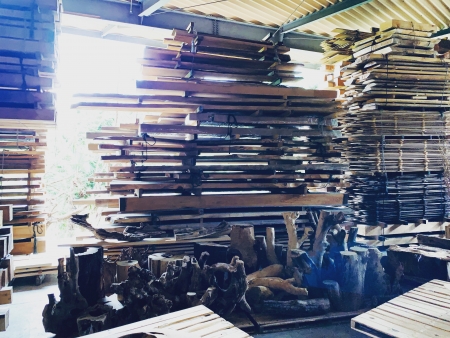気分と質料の関係
様々な気分を誘発してくれる建築には仕掛けが必要だ。
人は気分に左右される。それを否定的に捉えずに、積極的に肯定すれば、日常が楽しくなる。だから、気分を建築として形にする、建築が日常の中で多様な人の気分を誘発し、そこから様々な物語をつくり出す。その物語は人に愛着や慣れを生み、今そこに居る場所が、建築が、自分だけの、自分特有のものになる、離れられなくなる。
その仕掛けは、建築に散りばめられる。それは、小物、素材、ディテール、型、色などの質料だ。その質料の散りばめ方から、気分の誘発度が決まる。誘発度が高ければ高いほど、人にとってより親密感が増し、自分だけの空間になるが、それは同時に他人を排除してしまう。
その度合いは、その建築が誰に向けられたものかで決めれば良い。一般的には、美術館のような公共性の高い空間ならば、気分の誘発度は下げる、住宅のような私的性の高い空間ならば、気分の誘発度を上げる。ただし、これはあくまでも一般的な目安で、美術館でも気分の誘発度を上げて、建築自体が一種の美術作品のように仕立てても良いし、住宅でも気分の誘発度を下げて、あまりにも私的な空間になり過ぎるのを避けても良い。
いずれにせよ、人の気分がつくり出す物語が日常の建築を決める。
その気分を誘発する建築に散りばめられる仕掛けとしての小物、素材、ディテール、型、色などの質料が、複雑に変形した空間で、床や壁、天井の仕上げが極端に凹凸で派手な有彩色になればなるほど、仕掛けの質料が多ければ多いほど、気分の誘発度が高い。すなわち、より多くの、より複雑な物語をつくり出し、より私的で、より親密感が増し、より自分だけの空間や建築になる。
そして、それは建築の形式とは関係が無い、気分だけの問題であり、日常の問題だから、好きに形式を選択すれば良い。
この場合の形式は、過去の積み重ねから来る建築性でもあるし、そうではなくて、注文住宅か建売住宅か、でもある。要するに、形式は関係が無いから、汎用性が高い。汎用性が高ければ、地域や人種も関係が無い。
気分は誰でも日常的に持つことだから、形式とは無関係にしないと、その汎用性の高さについていけない。様々な気分を誘発してくれる建築は、実は汎用性が高く、誰でも受け入れることができて、人と密接に関係したものになる。
"Relationship between mood and quality"
A mechanism is necessary for architecture that induces various moods.
People depend on their mood. If you positively affirm it instead of negatively, you will enjoy your daily life. Therefore, the mood is shaped as an architecture, and the architecture induces various moods in daily life, and various stories are created from it. The story gives people attachment and familiarity, and the place where they are now becomes architecture that is unique to you and unique to you.
The mechanism is scattered throughout the architecture. It is a quality fee such as accessories, materials, details, molds, and colors. The degree of the induction of mood is determined by the manner in which the quality charges are scattered. The higher the degree of triggering, the more intimate for the person and the space of their own, but at the same time it excludes others.
The degree can be determined by who the architecture is directed to. In general, if the space is highly public such as an art museum, the degree of mood is lowered. If the space is highly private such as a house, the degree of mood is raised. However, this is just a general guideline. You can raise the mood level in the museum and make the architecture itself like a kind of art work. You can avoid becoming too much space.
In any case, a story created by a person's mood determines everyday architecture.
Small materials, materials, details, molds, colors, and other qualities that are scattered in the architecture that induces that mood are complexly deformed spaces, and floors, walls, and ceiling finishes are extremely uneven and showy chromatic colors. The higher the quality fee for the device, the higher the degree of mood induction. That means creating more and more complex stories, more private, more intimate, and more personal space and architecture.
And it's just a mood problem that has nothing to do with the form of architecture, and it's a daily problem, so you can choose the form you like.
The form in this case is the architecturality that comes from the past stacks, but it is also a custom house or a built house. In short, since the format is not related, it is highly versatile. If the versatility is high, there is no relation with the region and race.
Since everyone has a mood on a daily basis, unless they are independent of the format, they cannot keep up with their versatility. The architecture that induces various moods is actually highly versatile, can be accepted by anyone, and is closely related to people.

